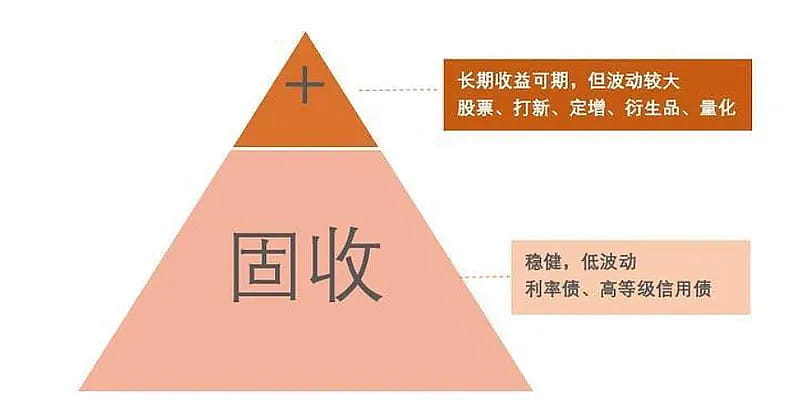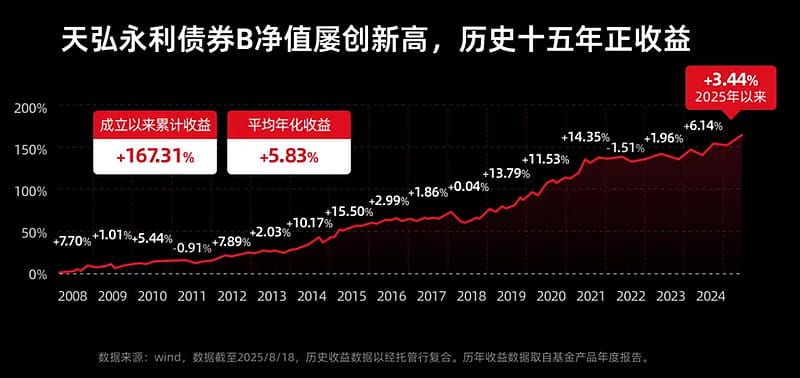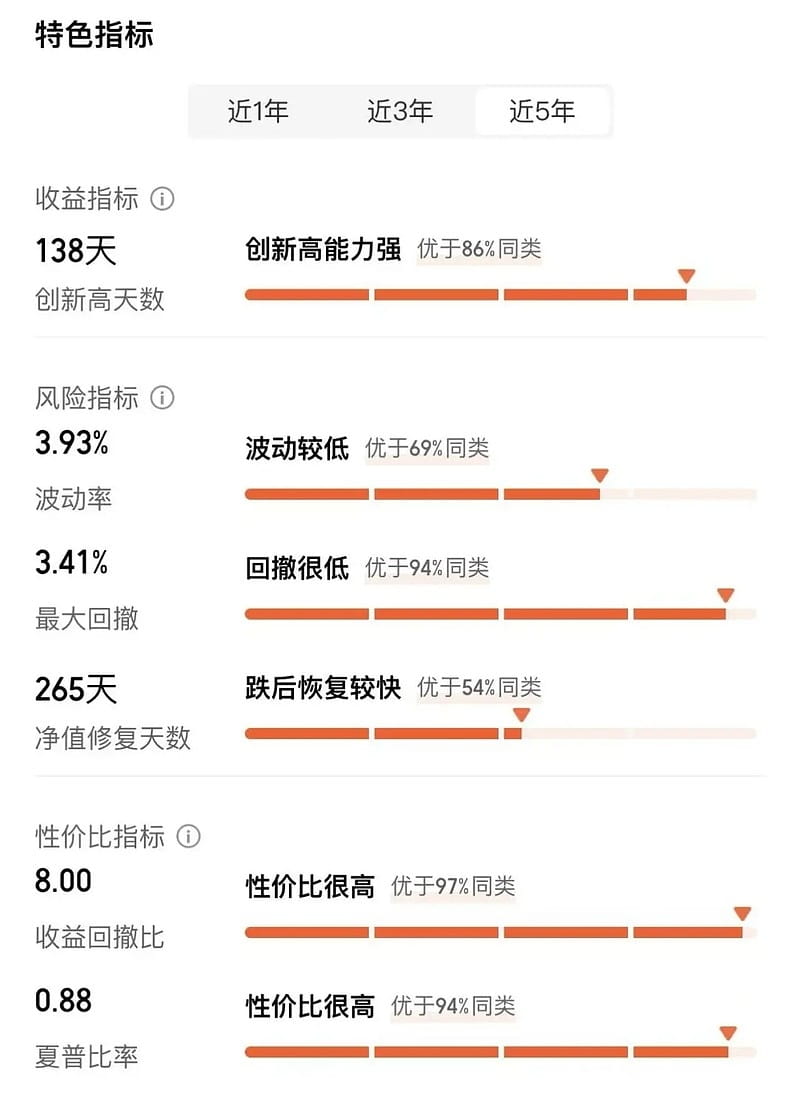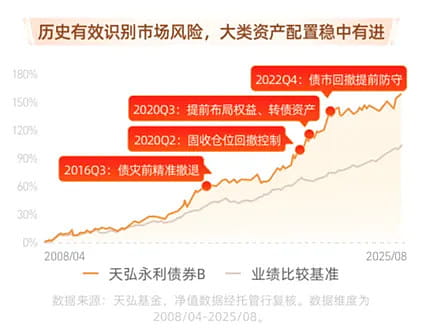Last Thursday, the market experienced a rare significant fluctuation, especially as some of the recently popular 'track stocks' had substantial pullbacks, with some technology funds betting on a single track dropping by more than 10% that day.
Meanwhile, some previously unpopular sectors such as consumption, banking, and dividends showed signs of rebound.
This actually serves as a wake-up call for investors; there is no market that only goes up without going down. Once the market fluctuates violently, can you still preserve your gains?
As we enter September, the rotation in the A-shares has accelerated, and the difficulty of investing is undoubtedly increasing. Many investors want to win but fear losing, falling into confusion.
How to respond to the current market.
On one hand, sectors represented by artificial intelligence, semiconductors, new energy, and non-ferrous metals have surged significantly, but valuations have risen too quickly, accumulating a large amount of profit-taking chips, leading to increased volatility.
On the other hand, sectors familiar to retail investors, such as food and beverages, traditional consumption, banking, coal, hydropower, and home appliances, are not rising much; some even declined, indicating that the so-called stable approach of relying on traditional blue-chip stocks to 'lie down and win' is becoming increasingly ineffective.
So how to respond?
In fact, as early as 1949, Graham proposed a 'stock-bond pairing strategy' in his book 'The Intelligent Investor': investing part of the assets in suitable bonds and the other part in diversified common stocks, balancing the allocation ratio of stocks and bonds according to market fluctuations.

China's Fixed Income+ funds have gradually evolved based on this strategy.
Compared to equity funds, the 'Fixed Income+' fund aims for absolute returns, using fixed income assets as a base, and under strict risk control, seeks to enhance returns with equity assets, aiming for the best balance between stocks and bonds.
This approach is more friendly to ordinary investors, not pursuing short-term explosive growth or overly allocating equity positions, but rather seeking a balance of offense and defense, with relatively small fluctuations in net value through asset switching and accumulating buffers. This strategy is quite applicable in the current context.
The market in 2025 is expected to show a slow bull trend, with indices rising steadily, but a 'bull market' does not mean daily increases; sector rotations will be frequent, and periodic fluctuations are unavoidable.
In such an environment, Fixed Income+ funds act as 'shock absorbers', providing 'defense in offense', and serving as a 'transitional zone' between equities and cash, avoiding overly aggressive portfolios while not being too conservative; helping investors maintain a stable mindset in volatility.
Even in a bull market phase, top global investors will not let their portfolios be fully invested in equities; maintaining a certain proportion of Fixed Income+ remains a rational choice for mature investors.
How to choose 'Fixed Income+' products.
'Fixed Income+' strategy is not simply a mix of stocks and bonds, but a combination of macro asset allocation concepts and stock-bond strategies.
'Fixed Income+' products must achieve both offensive and defensive capabilities, with relatively good absolute net value performance in the medium to long term while also controlling short-term drawdowns. This poses high challenges for fund managers and the overall strength of the company platform.
In recent years, the performance of publicly offered 'Fixed Income+' products has shown divergence, with the difference between the best and worst annual performance often exceeding 30%.
To choose high-quality 'Fixed Income+' funds, I have the following strict standards from a practical perspective:
1. 'Fixed Income+' often involves various asset allocations such as stocks, bonds, new issues, and derivatives, which places high demands on fund managers to have a solid foundation in macro research and category asset allocation, with significant market influence and industry recognition.
2. One should look at long-term performance over 3-5 years, downplaying short-term results. The product's annualized return should ideally be above 5%, requiring a yield higher than that of bank wealth management products.
3. The maximum drawdown of products over the past five years should be within 4%. Since it is Fixed Income+, the foundation should be bonds, and excessive volatility is undesirable, as it may exceed some clients' risk tolerance.
4. For Fixed Income+ products, look at the risk-return ratio; the product should have a high Sharpe ratio, and the historical proportion of profitable investors should be high.
5. The risk control capability of the fixed income team platform requires the company to have a strict risk control system and to strictly control drawdown levels.
Select a super strong long bull 'Fixed Income+'
With several conditions combined, products that meet the requirements become very scarce. Relatively speaking, I believe Tianhong Yongli Bond is worth focusing on.
First, long-term product performance: Historical average annualized return exceeds 5%, with a maximum annual drawdown of <4%, demonstrating excellent mid-to-long-term performance.
Tianhong Yongli Bond clearly aims for absolute returns. As a classic secondary bond fund, it adopts a strategy of 80% pure bonds as a foundation for stable returns, supplemented by 0-20% in stocks and convertible bonds for flexible allocation.
This configuration allows the fund to keenly capture changes in macro trends and micro market structures, seizing investment opportunities in a timely manner.
After years of market baptism, its operational system has become quite mature, exhibiting characteristics of rising in bull markets and resisting declines in bear markets, highly aligning with conservative investors' needs.

(Data source: Holder data is cited from the fund's annual report, ranking data is sourced from Wind, data as of 2025.8.18)
Data shows that since the establishment of Tianhong Yongli Bond B (420102) on April 18, 2008, the average historical annualized return over 17 years has reached 5.83%, with a historical cumulative return of 167.31%.
From the performance data of each stage, as of August 18, 2025, the return over the past year is 8.78%, the cumulative return over the past five years is 27.67%, and the cumulative return over the past ten years is 72.24%, ranking among the top 5 in similar products. In particular, the long-term returns are outstanding, effectively safeguarding the long-term stable appreciation of investors' assets. (Data source: Wind, return data has been verified by the custodian bank, ranking data is cited from Guotai Haitong, similar ranking (bond type - active bond open type))
It has a massive influence in the secondary bond field, ranking first in the number of users, with a scale as high as 20.5 billion, nearly 1.76 million holders, and has won the Hai Tong five-star rating, becoming a benchmark in the field of stable investments.

Data source: Tian Tian Fund, Tianhong Yongli Bond B, data as of 2025.9.5.
Data shows that this fund has maintained good control over drawdowns in the past five years, with a maximum drawdown of 3.41%. The return-to-drawdown ratio is 8 times, and the Sharpe ratio is 0.88, indicating a high cost-effectiveness.
Looking at the historical proportion of profitable investors, this fund has achieved an average return of 10.7% for those who bought it at any point over the past five years and held it for three years, indicating a relatively good holding experience.
Data source: Tian Tian Fund, Tianhong Yongli Bond B, data as of 2025.9.5.
Second, fund manager: Long-term tenure, repeatedly winning the Golden Bull Award, with high market recognition.
Tianhong Fund manager Jiang Xiaoli has been in charge of the Tianhong Yongli Bond Fund since August 2012, totaling over 13 years. During this period, she has successfully predicted major turning points in the bond market four times through multiple cycles of bull and bear markets.

Moreover, Jiang Xiaoli, as the Fixed Income Director of Tianhong Fund, has won the Golden Bull Award 10 times, with an overall annualized return of 6%. Currently, she manages 10 funds with a total management scale of 30.4 billion yuan. These achievements fully demonstrate Jiang Xiaoli's rich experience and market recognition in the investment field. (Data source: Ant Fortune, as of 2025.8.24)
Third, company platform: Tianhong Fund is a major player in fixed income, deeply engaged in public fund research and development, with strong supporting capabilities.
'Fixed Income+' products use fixed income as a shield and equities as a spear, requiring high research depth in the company's platform's investment research capabilities.
The key to solving this issue is determining how much equity to add under different market conditions. This decision determines the product's risk preference, net value performance, drawdown control, and the corresponding customer experience.
On one hand, capturing certain opportunities in the market without systemic risks enhances returns; on the other hand, proactively responding to potential market risks avoids excessive drawdowns in product net value.
Thus, dynamically adjusting the proportion of equity assets has become a top priority. Balancing principles and flexibility, Tianhong Fixed Income+ strives to achieve scientific decision-making through four major mechanisms, better capturing opportunities in equity assets.
Figure: Tianhong 'Fixed Income+' four major mechanisms strive for scientific adjustment of equity asset proportions.

The Tianhong Fund fixed income team is committed to using scientific and rigorous data analysis to research macroeconomics, monetary policy, institutional behavior, valuations, etc., to extract effective information for investment judgment from the complex market information, making forward-looking and accurate judgments on market turning points, striving to ensure that all investment decisions are based on objective analyses.
In long-term practical combat, this system has been effectively tested in the market. Taking Tianhong Yongli Bond B (420102) as an example, the fund has made precise predictions and timely adjustments during major market corrections, such as increasing positions in convertible bonds in the second half of 2018 before the bull market arrived; reducing positions in advance before the 2020 pandemic; and increasing positions ahead of the market's comprehensive rally in June of the same year. In 2022, the positions in stocks and convertible bonds were reduced and then increased, all aligning precisely with market trends, showcasing outstanding predictive capabilities.
During the investment process, the Tianhong Fund fixed income team adheres to the principle of treating the client's money as their own, establishing a strict risk control system and controlling drawdown levels, striving to navigate market cycles while creating long-term stable returns for clients.
Focus on two types of assets.
In addition to Tianhong Yongli Bond B (420102), the Tianhong Enhanced Return Bond Fund (Class A: 007128/Class C: 007129/Class E: 009735) managed by Jiang Xiaoli can also be considered.
The fund is managed by Jiang Yongli and Zhang Yu together; Zhang Yu is the main fund manager for Tianhong Fixed Income+, with a background in engineering from Tsinghua University and a master's in finance from Peking University.
Zhang Yu has focused on research in the manufacturing sector for 12 years, specializing in discovering growth stocks from the left side, particularly cyclical growth stocks, adept at capturing investment opportunities where industry trends resonate with individual stock fundamentals. Highly sensitive to the market, strong trading ability, and skilled at gradually reducing positions when stocks are high to control drawdown.
Since its establishment on May 29, 2019, the Tianhong Enhanced Return Bond Fund has achieved a return of 44.82%, significantly outperforming the performance benchmark. (Data source: iFind, as of 2025.6.30)
Regarding the strategy for the future market, the fund manager stated that although the consensus on market trends is currently high, the fundamentals are weak, and ample liquidity has spurred small-cap market activity. However, analysis of the current situation of small-cap stocks and convertible bonds indicates an increasing probability of de-bubbling.
There is a possibility that the market may switch from a liquidity-driven market to a fundamental market with PPI rising, and the key to judging this change lies in observing whether oil prices and Chinese long-term interest rates stabilize.
Based on the above market conditions, the investment strategy focuses on two types of assets. One type is companies in a high-quality development stage, characterized by a good supply structure, low input-output growth, and good governance to screen for targets that can continuously generate free cash flow. The other type is cyclical stocks, mainly focusing on companies that meet long-term return requirements during macroeconomic fluctuations.
Overall, Tianhong Yongli Bond B (420102) and Tianhong Enhanced Return Bond Fund (Class A: 007128/Class C: 007129/Class E: 009735) are suitable for those seeking stable returns, expecting asset growth through compound interest without frequent portfolio adjustments.
In the current low interest rate and moderate volatility environment, treating secondary bond funds as 'dividend-paying, rebalanceable, with small drawdowns, and slightly enhanced' bond bottom positions can stabilize the foundation of the portfolio while retaining the possibility of 'gentle elasticity'. This is the core reason for suitable allocation now.
Interested investors can search for Tianhong Yongli Bond B (420102) on the Alipay APP to learn more.
Scroll up and down to view the complete risk warning and data sources:
Risk warning: The market carries risks, and investments must be made cautiously. Past performance does not represent future results. Investors should carefully read the fund's (fund contract) (prospectus) and other legal documents before purchasing the fund, understand the fund's risk-return characteristics, and assess whether the fund aligns with the investor's risk tolerance based on their investment goals, investment horizon, investment experience, and asset status. The views provided are for reference only and do not constitute investment advice.
Tianhong Yongli Bond Securities Investment Fund-Class B was established on April 18, 2008. Since its inception, the performance for each complete accounting year and the comparative benchmark performance is as follows: 2009: 1.01% (2.07%); 2010: 5.44% (2.00%); 2011: -0.91% (3.79%); 2012: 7.89% (4.03%); 2013: 2.03% (1.78%); 2014: 10.17% (9.41%); 2015: 15.50% (6.50%); 2016: 2.99% (1.83%); 2017: 1.86% (0.25%); 2018: 0.04% (8.21%); 2019: 13.79% (4.59%); 2020: 11.53% (2.97%); 2021: 14.34% (5.09%); 2022: -1.51% (3.3%); 2023: 1.96% (4.77%); 2024: 6.13% (4.98%). Performance data is sourced from the fund's periodic reports.
Tianhong Enhanced Return has been established since May 29, 2019, the complete annual performance of Class A shares and the corresponding benchmark yield since its establishment are as follows: 2020: 15.21% (5.32%); 2021: 14.3% (0.87%); 2022: -5.36% (-4.06%); 2023: 1.06% (-0.64%); 2024: 6.22% (7.24%). Performance data is sourced from the fund's periodic reports.
Note 1: Consecutively winning the Golden Bull Award for 10 years: Several products under Tianhong Fund, such as Tianhong Yongli and Tianhong Ankang Yiyang, have won the Golden Bull Award for 10 consecutive years from 2014 to 2023. Among them, Tianhong Yongli and Ankang Yiyang are managed by Jiang Xiaoli and several other fund managers. The award-giving institution for the Golden Bull Award is China Securities Journal. In 2023, Yongli won the five-year open-end bond type sustained excellence Golden Bull Fund, in 2022 it won the seven-year open-end bond type sustained excellence Golden Bull Fund, in 2021 it won the five-year open-end bond type sustained excellence Golden Bull Fund, in 2020 it won the five-year open-end bond type sustained excellence Golden Bull Fund, in 2019 Tianhong Ankang Yiyang won the five-year open-end mixed type sustained excellence Golden Bull Fund, in 2018 Tianhong Yongli won the three-year open-end bond type sustained excellence Golden Bull Fund, in 2017 Tianhong Yongli won the three-year open-end bond type sustained excellence Golden Bull Fund, in 2016 Tianhong Fund won the special award for annual Golden Bull Fund contribution, in 2015 Tianhong Ankang Yiyang won the open-end mixed type Golden Bull Fund, in 2014 Tianhong Ankang Yiyang won the annual open-end mixed type Golden Bull Fund.
Risk warning: Funds carry risks, do not guarantee that the principal will not suffer losses, and do not guarantee profit. The views in this article only represent the author's personal opinions and do not represent the stance of the fund company. The content of this article is for research and learning purposes only, and the stocks, funds, etc. mentioned do not constitute any investment advice for the reader. Investment involves risks; choices should be made cautiously. Investors bear the risks and consequences of any investment actions themselves.